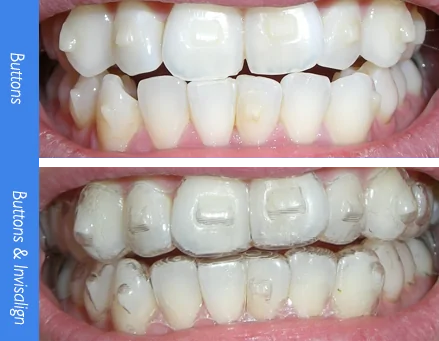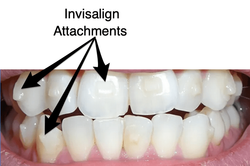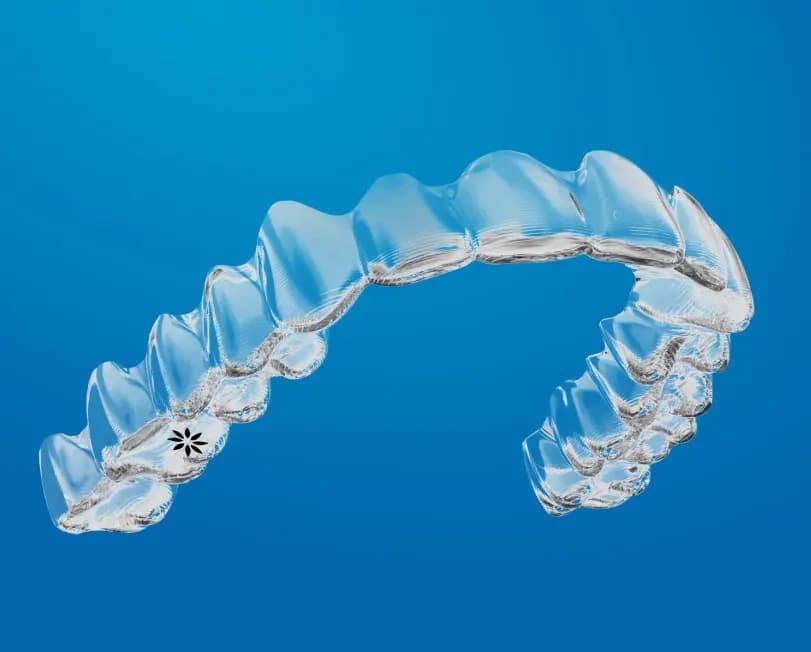Invisalign vs. Standard Braces: Which Choice Is Right for You?
When considering orthodontic therapy, the option in between Invisalign and conventional dental braces provides several vital elements that warrant careful evaluation. Invisalign offers a very discreet choice with removable aligners, while typical braces offer a more noticeable yet efficient remedy for serious imbalance. Each choice includes distinct benefits and drawbacks associated to aesthetic appeals, convenience, treatment period, and cost. Recognizing these subtleties is critical for making an educated choice that straightens with your individual choices and way of living. The inquiry remains: which option will finest satisfy your orthodontic demands and assumptions?
Review of Therapy Choices

In contrast, typical braces contain metal braces and wires that are bound to the teeth. This method uses continuous stress with time to achieve positioning. While reliable for complex orthodontic problems, typical braces need normal sees for adjustments and can position obstacles in keeping oral hygiene as a result of the difficulty of cleaning around braces and cords.
Both choices have their benefits, and the option frequently rests on particular oral problems, way of living preferences, and client compliance. Ultimately, speaking with an orthodontic specialist is critical for identifying the most appropriate treatment plan tailored to private requirements. Comprehending the subtleties of each alternative can dramatically affect the overall success of orthodontic therapy.
Aesthetic Considerations
A considerable element affecting the option in between Invisalign and standard braces is the visual appeal each therapy uses. Invisalign aligners are crafted from clear plastic, making them essentially undetectable when used.
In contrast, typical dental braces include metal braces and cables, which can be more recognizable. While developments in orthodontic modern technology have actually caused the growth of smaller sized brackets and colored elastics, conventional dental braces still maintain an even more conspicuous account. For some individuals, the visibility of dental braces may deter them from looking for necessary therapy.
Eventually, the choice in between Invisalign and conventional braces might rest on individual preferences pertaining to visual appeals. Patients who focus on discretion frequently lean towards Invisalign, while those who are much less worried concerning visibility may select conventional dental braces. Understanding the aesthetic ramifications of each alternative is important for making an educated choice that aligns with one's way of life and choices.
Comfort and Convenience

In terms of benefit, Invisalign aligners are removable, allowing people to appreciate their favorite foods without restriction and preserve optimal dental hygiene. Cleaning and flossing are streamlined, as the aligners can be obtained during these routines, whereas typical dental braces need cautious navigating around wires and braces.
In contrast, typical dental braces necessitate regular changes, making them less hassle-free for those with active routines. On the whole, the convenience and benefit of Invisalign make it an appealing option for many people looking for orthodontic treatment.
Therapy Period and Efficiency
While both Invisalign and traditional braces work in fixing oral imbalances, the duration of therapy can vary significantly in between both alternatives. Normally, Invisalign treatment can take anywhere from 12 to 18 months, relying on the complexity of the instance. The clear aligners work by slowly changing teeth into their preferred placements, and see here now routine follow-ups with an orthodontist help guarantee progress stays on track.
On the other hand, traditional braces usually need a longer dedication, typically varying from 18 months to 3 years. This is because of their set nature and using cords and braces, which can be much more reliable for complicated cases and extreme misalignments (Invisalign). The treatment performance of standard braces is well-documented, as they permit specific modifications and greater control over tooth motion
Eventually, the choice between Invisalign and traditional dental braces may rest on both the anticipated therapy duration and the particular dental issues available. Consulting with an orthodontist is critical, as they can provide tailored suggestions based on private needs, guaranteeing the selected technique aligns with desired outcomes and timeframes.
Expense Contrast and Insurance Policy Alternatives
Price plays a significant function in the decision-making procedure for individuals thinking about orthodontic therapy, whether choosing for Invisalign or conventional braces. On standard, the expense of Invisalign varieties from $3,000 to $8,000, while traditional dental braces normally cost between $2,000 and $6,000. Factors affecting these expenses consist of the intricacy of the case, the period of therapy, and geographical location.
Insurance insurance linked here coverage can dramatically affect out-of-pocket costs. Numerous dental insurance coverage strategies provide partial coverage for orthodontic therapies, however the specifics can vary extensively. It is vital for clients to examine their insurance policy policies to identify the degree of coverage for either alternative. Typically, conventional braces may be extra often covered by insurance strategies contrasted to Invisalign, which some insurance companies classify as an aesthetic treatment.
Furthermore, numerous orthodontic practices use adaptable payment plans, making both treatment choices more easily accessible. Patients must make inquiries regarding possible financing choices and price cuts for upfront repayments. Evaluating the overall expense, consisting of insurance benefits and layaway plan, is crucial for making an informed choice that aligns with both visual preferences and budget considerations.

Conclusion
In summary, the selection between Invisalign and standard braces rests on numerous factors, including visual preferences, convenience, treatment period, and price. Invisalign provides a very discreet, removable choice that promotes dental health and nutritional flexibility, while traditional braces might be better for complex dental issues and commonly come with a reduced cost point. Eventually, appointment with an orthodontist is important to examine private situations and identify the most suitable treatment option for attaining optimum oral positioning.
When considering orthodontic therapy, the go to the website selection in between Invisalign and standard braces offers several vital factors that merit careful analysis.Comparing Invisalign and conventional dental braces discloses unique treatment options for orthodontic modification.While both Invisalign and conventional dental braces are effective in remedying dental imbalances, the duration of therapy can differ dramatically in between the 2 choices.Price plays a considerable duty in the decision-making process for people considering orthodontic therapy, whether opting for Invisalign or standard braces.In recap, the choice in between Invisalign and traditional dental braces hinges on numerous elements, consisting of aesthetic preferences, convenience, therapy duration, and cost.
Comments on “How Invisalign Functions: Your Overview to Clear Aligners and Their Effectiveness”